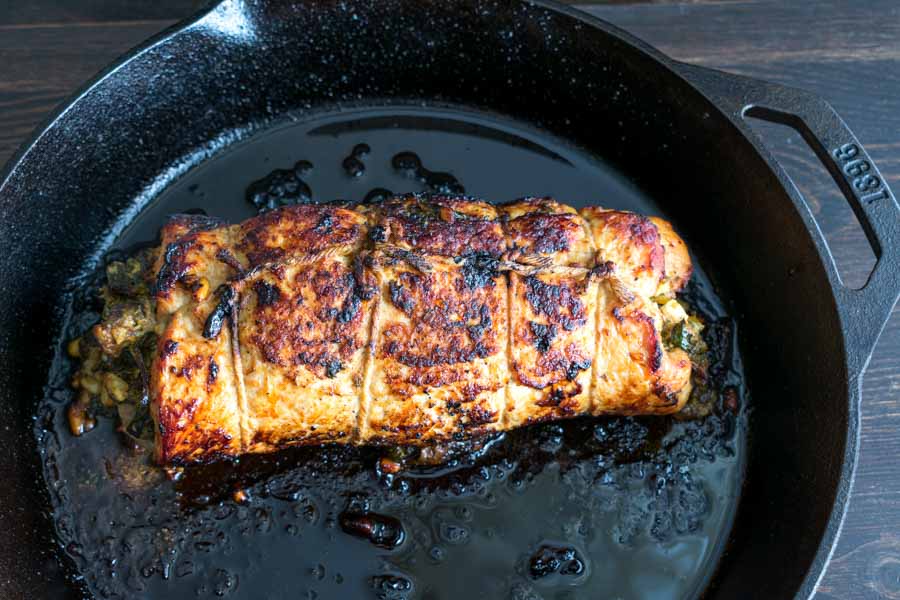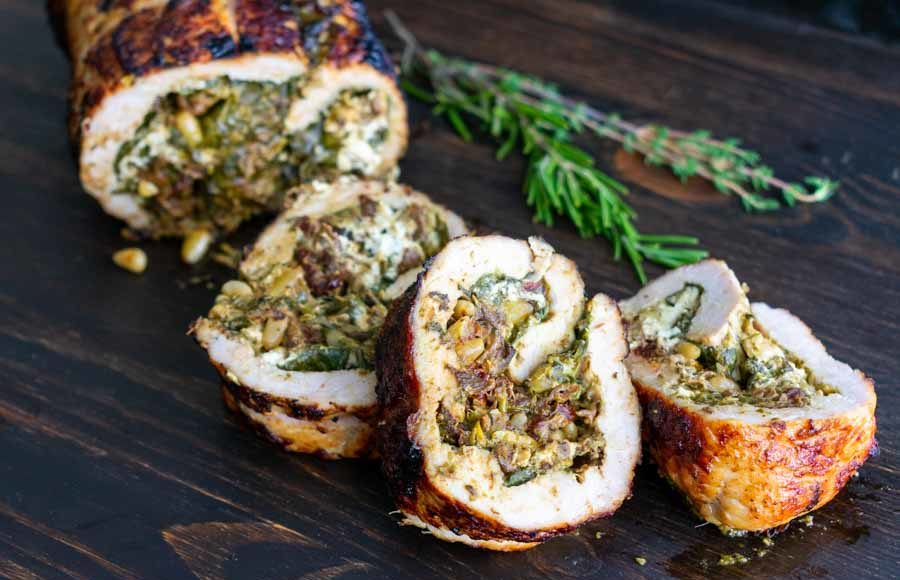I’ve made pork tenderloin stuffed into bread and wrapped in pork belly, but I’ve never made a stuffed pork tenderloin. I feel like that has to change, and this Stuffed Pork Tenderloin recipe sounds like a great way to make that happen. The general principle is similar to a beef recipe I made a while back called Matambre. A piece of meat is cut open, pounded flat, stuffed, and rolled up to cook. Sounds complicated, right? Let’s find out!
Here I am with a great fall recipe (stick to your ribs and turn on the oven)!
The Ingredients
The list of ingredients for this recipe is medium-length and full of tasty things. I had a couple of things on hand, so I had to buy quite a few ingredients. The good news was my local grocery store had almost everything.
I couldn’t find dried mushrooms and ended up ordering them from Amazon. Thank goodness for next-day delivery! I chose dried porcini mushrooms, and a 1-ounce bag was $4.66.
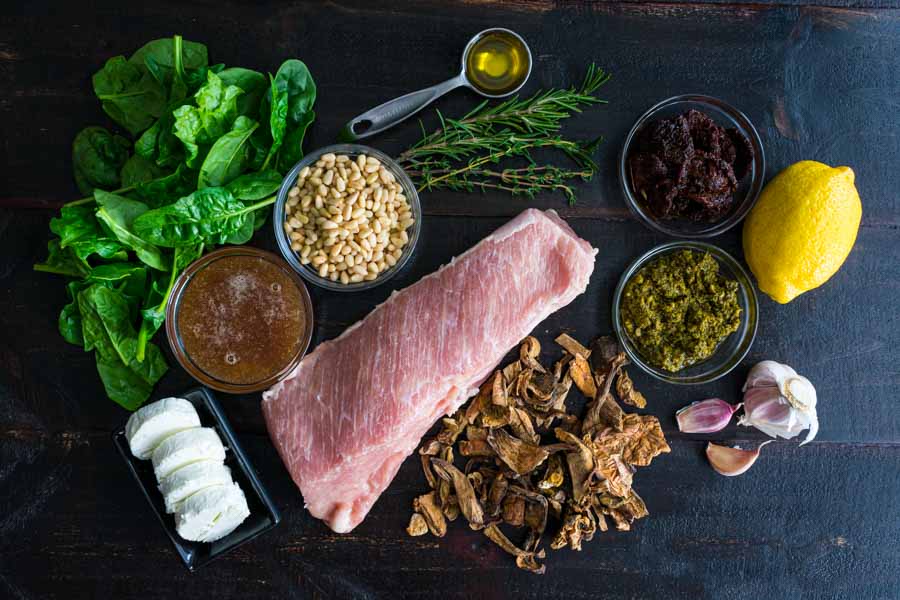
The Process
I’m going to tell you upfront that my husband and I loved this recipe! And I have to admit I loved that he was so impressed by the finished roast. It was so good that I hate to have to point out the problems I had with the recipe, but that’s part of why I’m here.
Here’s how my time was spent on the entire recipe:
- 33 minutes to prep
- 5 minutes to brown
- 40 minutes to bake
- 5 minutes to stand
- 1 hour 23 minutes total
The Filling Ingredients
First, most of the ingredients don’t have instructions on how they are to be prepared. For instance, the ingredients listed two garlic cloves, but there is no note specifying whether it needs to be minced, pressed, chopped, etc. Whole garlic cloves seemed very unlikely, so I used my garlic press.
This is how I prepped the ingredients that had no instruction:
- Spinach – I used whole baby spinach leaves. kale would need to be torn chopped.
- Goat Cheese – I cut it into small pieces.
- Sun-dried Tomatoes – I roughly chopped them.
- Garlic Cloves – Pressed, as previously mentioned. Mincing would also work.
Prepping the Pork
Next up was how the pork tenderloin was cut open. There are two methods to do this, butterflying or roll-cutting (both shown in this video). The recipe instructions describe the butterfly method, but my pork tenderloin was quite thick, so I used the roll-cutting method.
There were a couple of reasons behind my decision to change methods. The main reason was butterflying the tenderloin would have left me with very thick halves to pound. You can only thin the meat so much by pounding it—it’s not a miracle process.
The other reason was roll-cutting the tenderloin gave me a larger piece of pork to roll up, especially after I pounded it with my meat mallet. I did cut a hole in it near the center (shown below), but everything worked out just fine. I used a strategically placed spinach leaf to patch the hole before adding the filling.
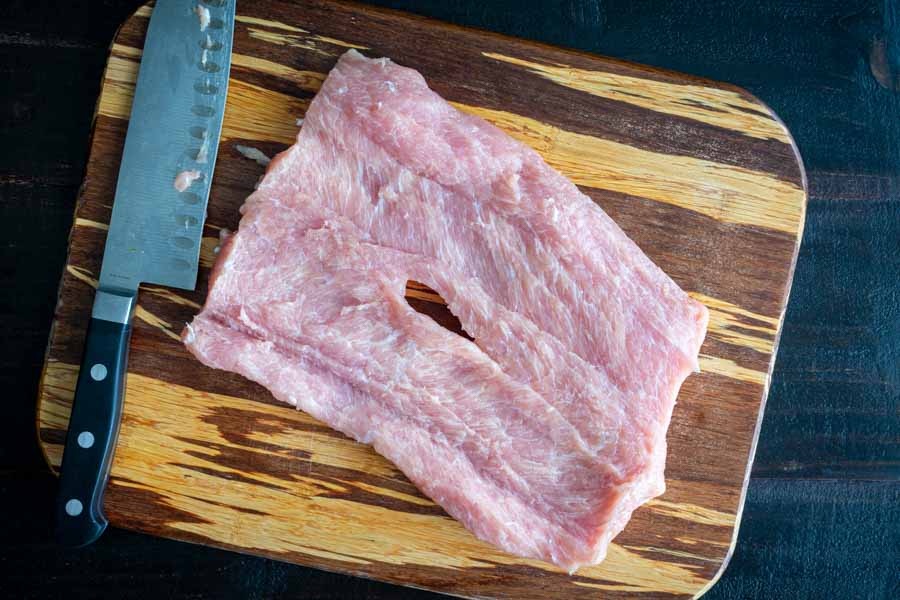
Once the pork was pounded thin, I cut a few pieces of kitchen string to tie it with. Then I laid them out on a cutting board, placed the pork on top of them, and spread the filling on top of that. The amount was perfect, and I was able to roll everything up and tie it easily.
There was just enough overlap on the pork to hold it all together nicely. Yes, a little filling did spill out of the ends, but it was easy to tuck back in. A final piece of string to wrap the roll lengthwise helped secure it.
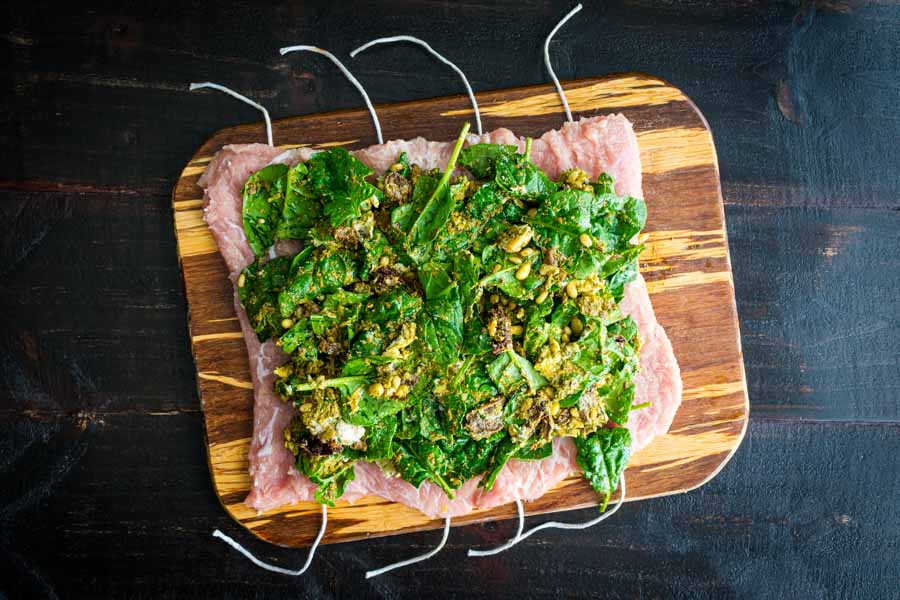
Cooking
I chose my 12-inch cast iron pan to brown and bake the stuffed pork tenderloin, and it was perfect for the job. Abut one minute per side browned the roast nicely, then it was into the preheated oven.
I was skeptical of the 10-minute baking time listed in the recipe, so I made sure to check the temperature with my meat thermometer. Sure enough, the center of the roll was only 86℉ ?. It took a total of 40 minutes to get the center to a safe 165℉. After removing it from the oven, I let the roast stand for another 5 minutes to allow the temperature to rise a little more.
